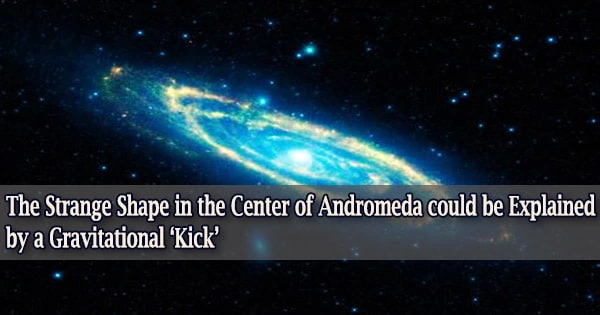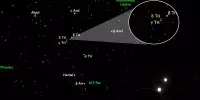When two galaxies collide, the supermassive black holes at their centers produce a powerful gravitational “kick,” similar to a shotgun recoil. According to a new study led by CU Boulder, this kick could be so powerful that it could throw millions of stars into wacky orbits.
The study, which was published in The Astrophysical Journal Letters on 29th October 2021, sheds light on a long-standing riddle concerning a peculiarly structured cluster of stars at the center of the Andromeda Galaxy. It could also aid researchers in better understanding how galaxies grow by feeding on one another.
“When scientists first looked at Andromeda, they were expecting to see a supermassive black hole surrounded by a relatively symmetric cluster of stars,” said Ann-Marie Madigan, a fellow of JILA, a joint research institute between CU Boulder and the National Institute of Standards and Technology (NIST). “Instead, they found this huge, elongated mass.”
Now, she and her colleagues think they have an explanation.
In the 1970s, astronomers sent balloons high into Earth’s atmosphere to look at Andromeda, the galaxy closest to the Milky Way, in ultraviolet light. The Hubble Space Telescope followed up on those initial observations in the 1990s and delivered a surprising finding: Like our own galaxy, Andromeda is shaped like a giant spiral. However, the area densely populated with stars at the spiral’s core does not appear to be as it should; the orbits of these stars take on an unusual, ovalish form, as if someone had stretched out a wad of Silly Putty.
When galaxies merge, their supermassive black holes are going to come together and eventually become a single black hole. We wanted to know: What are the consequences of that?
Tatsuya Akiba
And no one knew why, according to Madigan, who is also an astrophysics assistant professor. The pattern is known as a “eccentric nuclear disk” by scientists.
The researchers conducted computer models to see what happens when two supermassive black holes collide. Andromeda likely formed billions of years ago during a similar merger.
The force generated by such a merger, according to the team’s estimates, might bend and pull the orbits of stars near a galactic center, resulting in the characteristic elongated pattern.
“When galaxies merge, their supermassive black holes are going to come together and eventually become a single black hole,” said Tatsuya Akiba, lead author of the study and a graduate student in astrophysics. “We wanted to know: What are the consequences of that?”
Bending space and time
He went on to say that the team’s discoveries assist to show some of the mechanisms that may be driving the diversity of the universe’s estimated two trillion galaxies, some of which resemble the spiral-shaped Milky Way while others resemble footballs or irregular blobs.
Mergers may play a significant influence in the formation of certain stellar masses: When galaxies collide, the black holes at their centers may start spinning around each other, moving faster and faster until they bang together, according to Akiba..
They release massive pulses of “gravitational waves,” or physical ripples in the fabric of space and time, in the process.
“Those gravitational waves will carry momentum away from the remaining black hole, and you get a recoil, like the recoil of a gun,” Akiba said.
He and Madigan sought to know what such a recoil would do to the stars within 1 parsec of a galaxy’s center, or around 19 trillion miles. Andromeda reaches tens of thousands of parsecs from end to end and can be seen with the naked eye from Earth. It gets pretty wild.
Galactic recoil
The researchers used computers to create models of false galactic centers with hundreds of stars, then kicked the core black hole to imitate gravitational wave recoil. The gravitational waves created by such a catastrophic collision, according to Madigan, will not directly affect the stars in a galaxy.
The remaining supermassive black hole, on the other hand, will be thrown back through space at speeds of millions of miles per hour, which isn’t awful for a body with a mass millions or billions of times that of the sun.
“If you’re a supermassive black hole, and you start moving at thousands of kilometers per second, you can actually escape the galaxy you’re living in,” Madigan said.
When black holes don’t escape, the researchers discovered that they can pull on the orbits of the stars around them, stretching them out. The end result resembles the form seen at the center of Andromeda by scientists.
Madigan and Akiba stated that they intend to expand their simulations so that they may compare their computer results to the real-life galaxy core, which has many times more stars. They added that their discoveries could aid scientists in better understanding odd events surrounding other things in the cosmos, such as planets orbiting mysterious phenomena known as neutron stars.
“This idea if you’re in orbit around a central object and that object suddenly flies off can be scaled down to examine lots of different systems,” Madigan said.
















